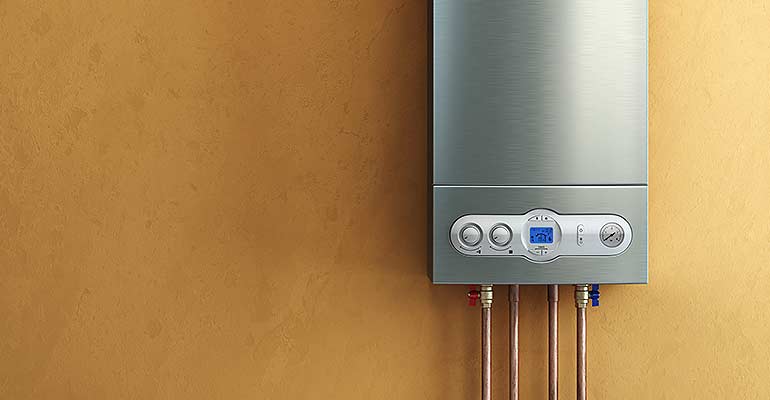Best Ways to Maintain Your Home's Hot Water System EffectivelyImportant Maintenance Techniques for Your Home's Hot Water SystemWays to Prolong the Lifespan of Your Home's Hot Water System By Maintenance
Best Ways to Maintain Your Home's Hot Water System EffectivelyImportant Maintenance Techniques for Your Home's Hot Water SystemWays to Prolong the Lifespan of Your Home's Hot Water System By Maintenance
Blog Article
Everybody has got their own unique way of thinking involving Tips For Maintaining Your Hot Water Heater.

Hot water is necessary for day-to-day comfort, whether it's for a refreshing shower or cleaning recipes. To guarantee your hot water system runs effectively and lasts much longer, normal upkeep is crucial. This write-up provides useful ideas and understandings on just how to keep your home's hot water system to prevent disturbances and costly repair work.
Intro
Keeping your home's warm water system could appear complicated, yet with a couple of straightforward steps, you can ensure it operates smoothly for years to find. This guide covers whatever from comprehending your warm water system to do it yourself upkeep ideas and understanding when to call in professional help.
Importance of Maintaining Your Hot Water System
Regular upkeep not just prolongs the life expectancy of your warm water system however likewise ensures it operates efficiently. Neglecting maintenance can result in reduced efficiency, higher power costs, and also early failing of the system.
Indications Your Hot Water System Needs Maintenance
Recognizing when your warm water system requires attention can prevent major problems. Look out for signs such as inconsistent water temperature level, strange sounds from the heater, or rustic water.
Flushing the Hot Water Heater
Flushing your hot water heater gets rid of debris buildup, enhancing effectiveness and extending its life.
Checking and Changing Anode Rods
Anode poles avoid deterioration inside the storage tank. Checking and changing them when worn is important.
Complicated Problems Calling For Specialist Help
Examples include significant leaks, electric issues, or if your water heater is continually underperforming.
Regular Professional Upkeep Advantages
Professional upkeep can include detailed assessments, tune-ups, and guaranteeing conformity with security standards.
Checking and Readjusting Temperature Setups
Changing the temperature level settings makes certain ideal efficiency and safety and security.
DIY Tips for Upkeep
You can carry out numerous maintenance jobs yourself to maintain your hot water system in leading condition.
Looking for Leakages
On a regular basis inspect pipelines and connections for leakages, as these can result in water damages and higher expenses.
Recognizing Your Hot Water System
Prior to diving right into maintenance jobs, it's useful to recognize the basic elements of your warm water system. Generally, this consists of the water heater itself, pipes, anode poles, and temperature level controls.
Monthly Upkeep Tasks
Normal monthly checks can assist capture small issues before they rise.
Evaluating Stress Relief Valves
Checking the pressure relief valve guarantees it operates correctly and avoids extreme stress build-up.
Insulating Pipelines
Insulating hot water pipes reduces heat loss and can save power.
When to Call a Specialist
While DIY upkeep is advantageous, some problems need specialist know-how.
Verdict
Routine upkeep of your home's warm water system is vital for performance, durability, and expense financial savings. By following these tips and knowing when to seek professional help, you can guarantee a trustworthy supply of warm water without unanticipated interruptions.
Water Heater Maintenance Tips
Test the TPR Valve
Shut off the power and the cold-water supply valve. Place a bucket under the pipe connected to the temperature-pressure-release (TPR) valve on the top or side of the tank. (This valve opens if the tank pressure gets too high.) Lift the valve’s tab to let some water out, then let go. If water keeps flowing, drain the tank partway, unscrew the old valve with a pipe wrench, and install a new one. Check the Anode Rod
Put a hose to the tank’s drain cock and let out a few gallons of water. Now fit a 1 1/16-inch socket onto the rod’s hex head on top of the heater (or under its top plate) and unscrew the rod. If it’s less than ½ inch thick or coated with calcium, buy a new one, wrap its threads with Teflon tape, put it back in the tank, and tighten securely. Use this segmented rod if headroom above the tank is limited. Drain the Tank and Wash Out Sediment
Drain the remaining water in the tank into the bucket, then stir up the sediment on the tank’s bottom by briefly opening the cold-water supply valve. Drain and repeat until clean water comes out of the hose. Close the drain cock, refill the tank, and turn its power back on. Adjust the Temperature
Find the temperature dial on the side of the tank and unscrew its cover. Adjust the dial to 120 degrees using a flathead screwdriver. For every 10 degrees the temperature is lowered, you can expect to save up to 5 percent in energy costs. Turn the water heater off or the thermostat down to its lowest setting if you plan to be away from home for more than three days. Insulate the Pipes
Buy some self-sticking 3/8-inch-thick foam pipe insulation that matches the pipes’ diameter. Slide the foam over the hot-and cold-water pipes as far as you can reach. Insulating the cold-water pipe prevents condensation in summer. Peel the tape and squeeze the insulation closed. If the pipe is 6 inches or less from the flue, cover it with 1-inch-thick unfaced fiberglass pipe wrap. https://www.thisoldhouse.com/plumbing/21016402/how-to-maintain-a-water-heater

I'm certainly very curious about Tips on Maintaining a Water Heater and I hope you enjoyed reading the new blog post. Make sure you take a moment to distribute this blog entry if you appreciated it. We enjoy your readership.
Call Today Report this page